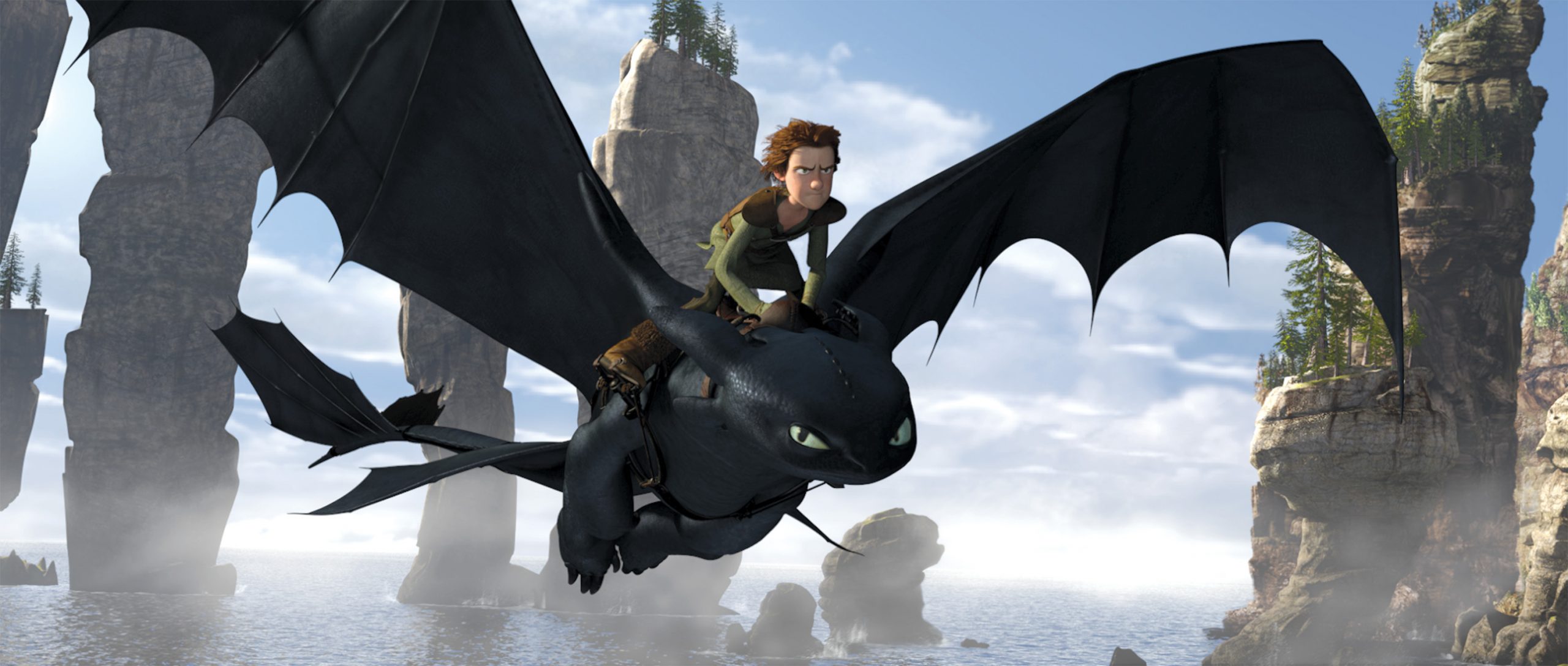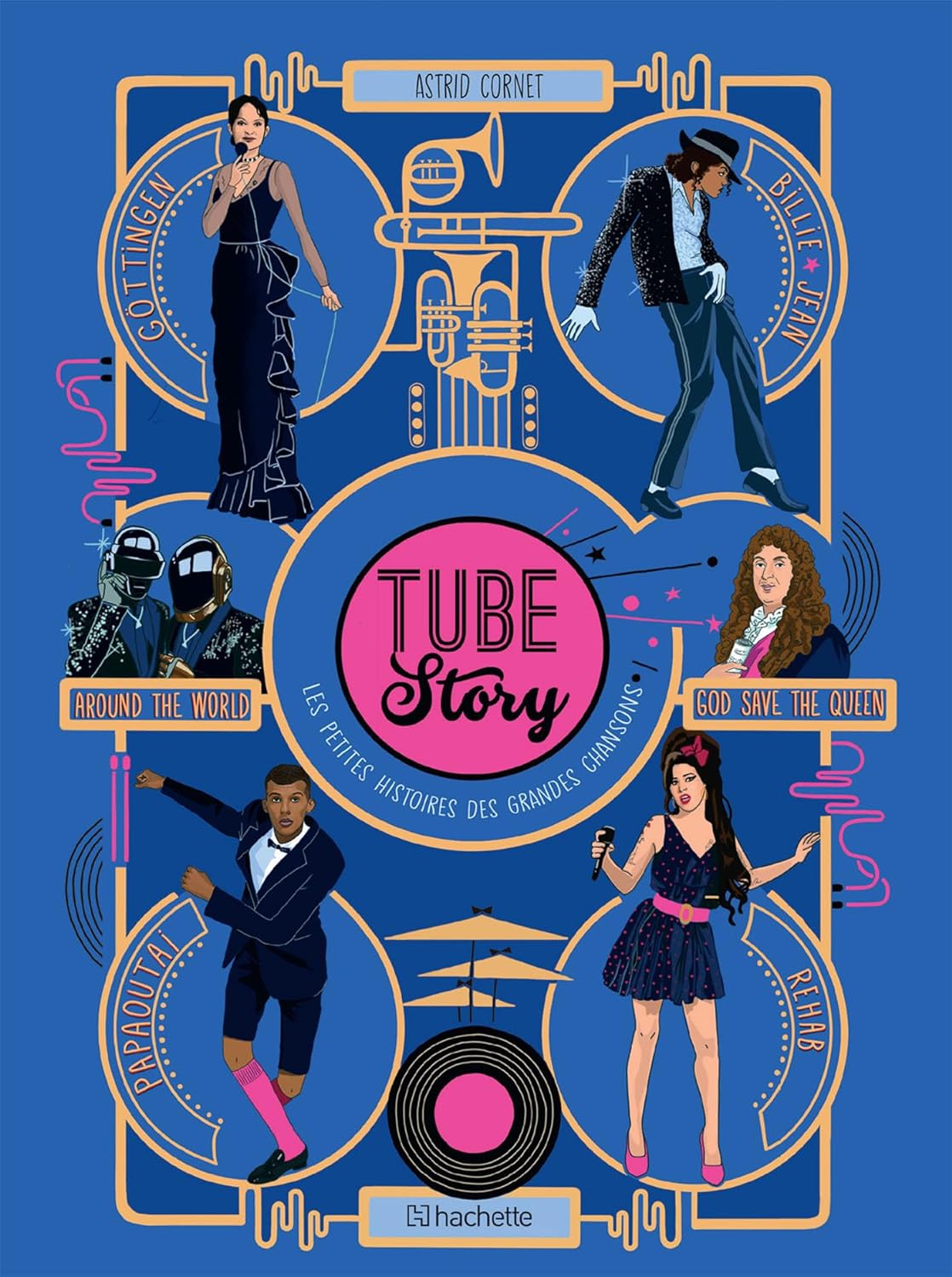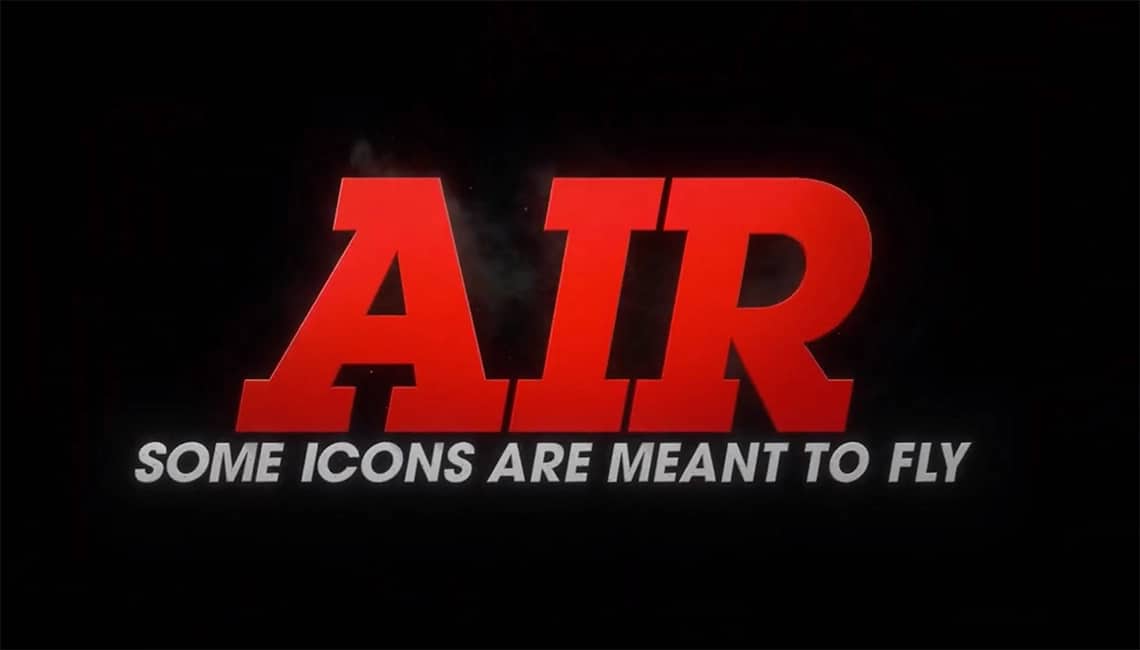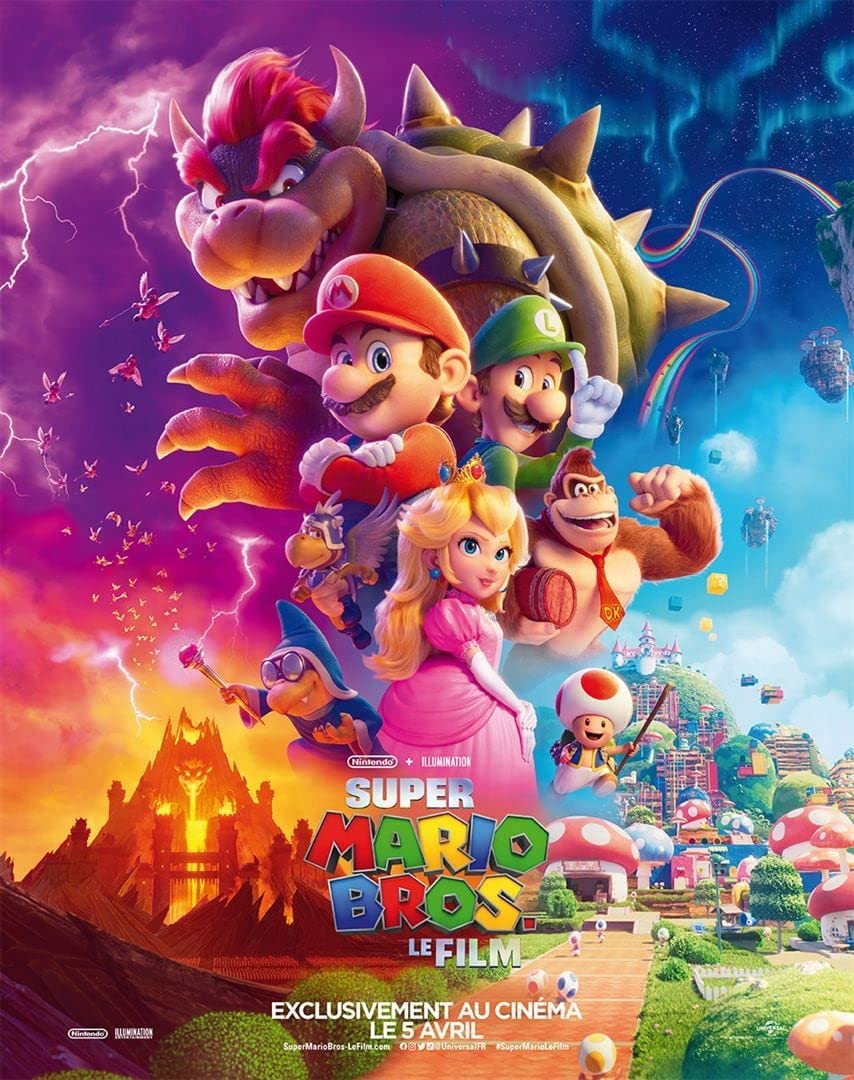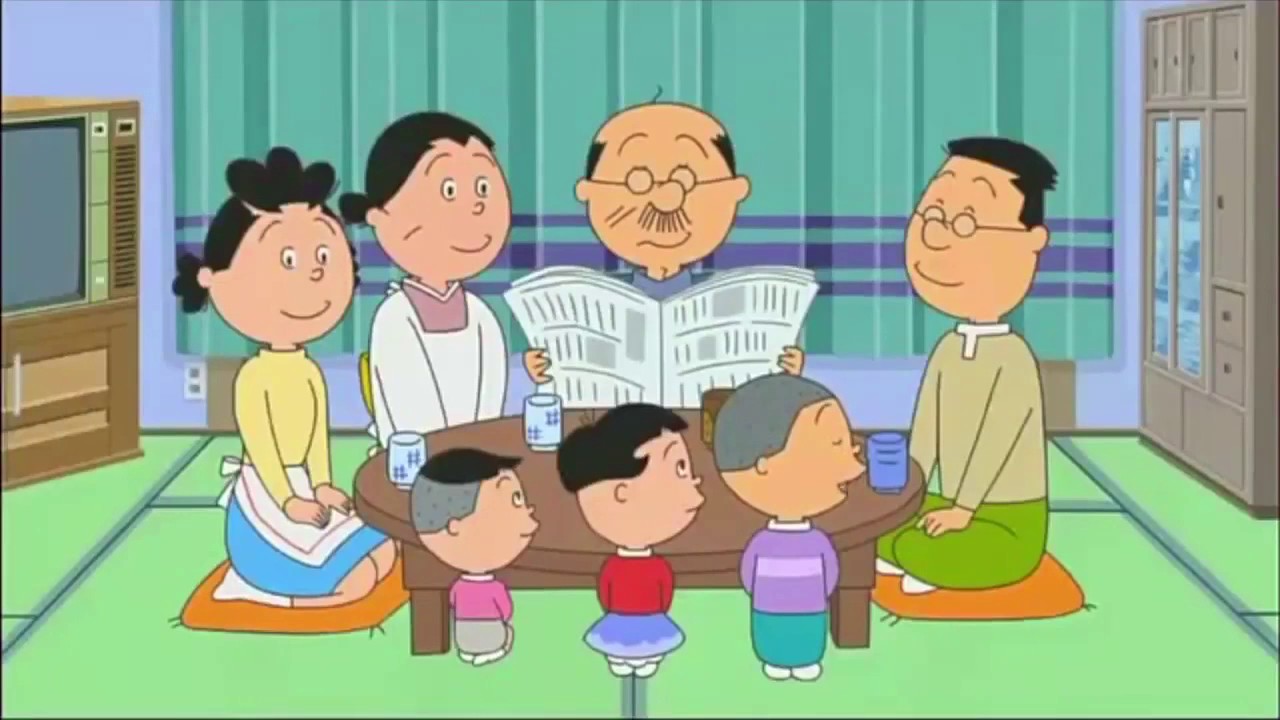Since 1995 with the release of their first animated feature film (Toy Story), Pixar studios have continued to surprise the general public as well as moviegoers. This is obviously due to films of very high quality (for the most part), but also and especially to themes in subtexts that are found within these works. Today, we offer you an overview of some of the Pixar productions, through the incredibly mature themes that they have been able to offer us. Focus!
Toy Story – John Lasseter (1995): power and overconsumption
Toy Story is the first feature film created by a computer in 3D animation. It follows a few short films directed by John Lasseter including Tin Toy in 1988 which already dealt with the theme of animated toys. Produced seven years later, Toy Story takes up the same theme. Out of sight of humans, toys come alive and behave like us. In the room of a little boy, the cowboy Woody, leader of toys, will be replaced as a mess by Buzz Lightyear, the new attraction in vogue. From his jealousy will be born an immoral behavior: Woody will cause the fall of Buzz Lightyear out of the room, their only place of life. This enmity will turn into a "happy ending" with the restoration of balance and the sharing of leadership between Buzz and Woody. The feature film, intended mainly for a "child" audience, will pave the way for many other Pixar by inserting several reading grids allowing it to also reach adults. Thus, the film encompasses two main themes: the consumer society and the desire for power.
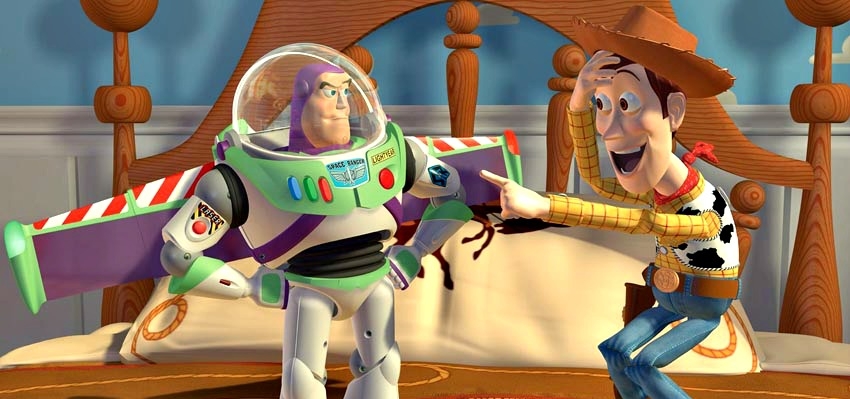
Overconsumption is expressed by the easy replacement of one toy by another: Woody by Buzz Lightyear. These two objects are only temporary entertainment. The fashion effect around these passing icons is perfectly induced by advertising. Buzz, the new gondola head, is everywhere: on TV, on supermarket shelves, in Andy's room… Overconsumption and mass marketing end up touching the reality of Buzz who thought he was unique. He finally realizes that it is "made in Taiwan" among many others and that its wings are not real, simply a well thought out packaging.
Woody assumes the role of the Cartesian mind that immediately understands the stakes of reality: he is a replaceable toy. This immediately creates a feeling of fear of being abandoned. Unlike Buzz, eternal utopian, Woody embodies very human feelings that we can easily relate to, including jealousy and the serious acts that it can entail. The moral sense is lost in this quest for power and he comes to treacherous even violent stratagems to eject Buzz from his territory. The obvious double reality between the two main characters: that of the imaginary and the pragmatism of the consumer society, can be closer to the Pixar/Disney duality. Pixar creates imagination; Disney distributes and manages communication. A pair with two very different realities: creation and innovation versus financial pragmatism. With such advanced subtexts, Toy Story has laid the groundwork for its own saga, but also for most of the productions that will follow!
Author: Barnabas
Toy Story 2 – John Lasseter (1999): Abandonment
In 1999, John Lasseter puts it back with the deepening of the previous themes, while adding new ones. Toy Story 2 contains themes that made half of the children very sad, while leaving the other half indifferent. The reason for this emotion lies in some deep scenes, difficult to appreciate at their true value for a young audience. The central theme of the story is one of abandonment and oblivion. It was certainly addressed from the first film, but here, this subject no longer only affects Woody. Other characters are plagued by this fear, due to a global problem: children grow, change, and abandon their toys, which by their nature as living beings, become helpless victims.
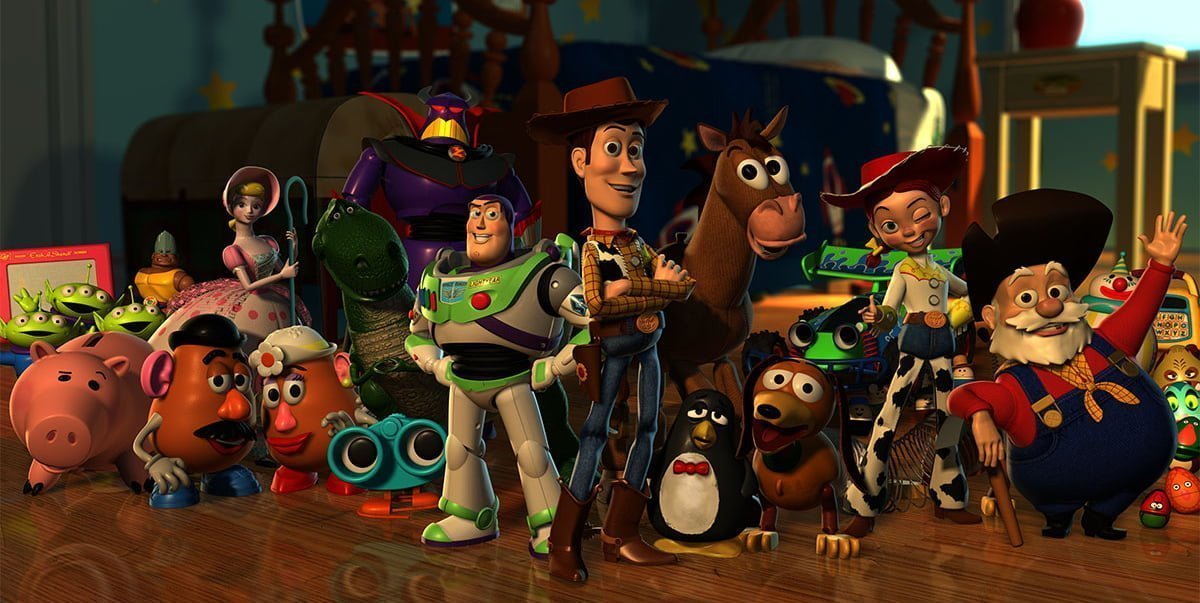
The first example is a penguin, Whistle, who finds himself unable to whistle. That's what made it interesting as a toy. And what do we do with an object that has lost its interest? It is thrown away. We get rid of it. Strangely, one can think of a worker who loses his hand in an accident and becomes unable to work. Whistle, being pitiful, gives the impression of being at the end of life, sick. It is this uselessness that kills him. In addition, he is instantly compared to Woody, who has an advantage that does not come with the box: Andy loves him. This is why even if it is not taken to the summer camp because broken at the last moment (making it lose its raison d'être), it is not sold at the garage sale by the mother.
The character most affected by this issue is Jessy. It is in perfect condition but has been abandoned. For a simple reason: growing up, her owner considered that they no longer had anything to do together. His song explains something absolutely horrible: a breakup with no possibility of return from a passionate friendship with its former owner. We can indeed speak of rupture, as the separation is violent. If you have experienced a romantic separation, you will perfectly understand the grief of this cowgirl. But we can ask ourselves a question: is the ordinary child able to appreciate this poignant song at its true value? The answer is probably no. And that's why Toy Story 2 deserves to be reviewed as we age: its themes (main or secondary) are far from childish.
Author: Jean Johnson
Monster & Co . – Pete Docter, David Silverman and Lee Unkrich (2001): The Reversal of Fear
Released in 2001, Monsters & Co. propels us to Monstropolis, a city inhabited by monsters and organized like ours, except that their energy is created by the cries of children. The company "Monstre & Cie" has developed 230 teams, each composed of an elite terror and his stress attaché, in order to frighten children from 253 different countries. We follow the adventures of Jacques Sullivan (or Sulli) and Robert Razowski (aka Bob), who cross paths with Bouh, a child of the real world. However, the elements of the real world are considered toxic. A race ensues to hide the child to whom Sulli gradually becomes attached. The most interesting thing about this animated film is the way Pixar soothes fears and makes the myth of the monster in the closet obsolete.
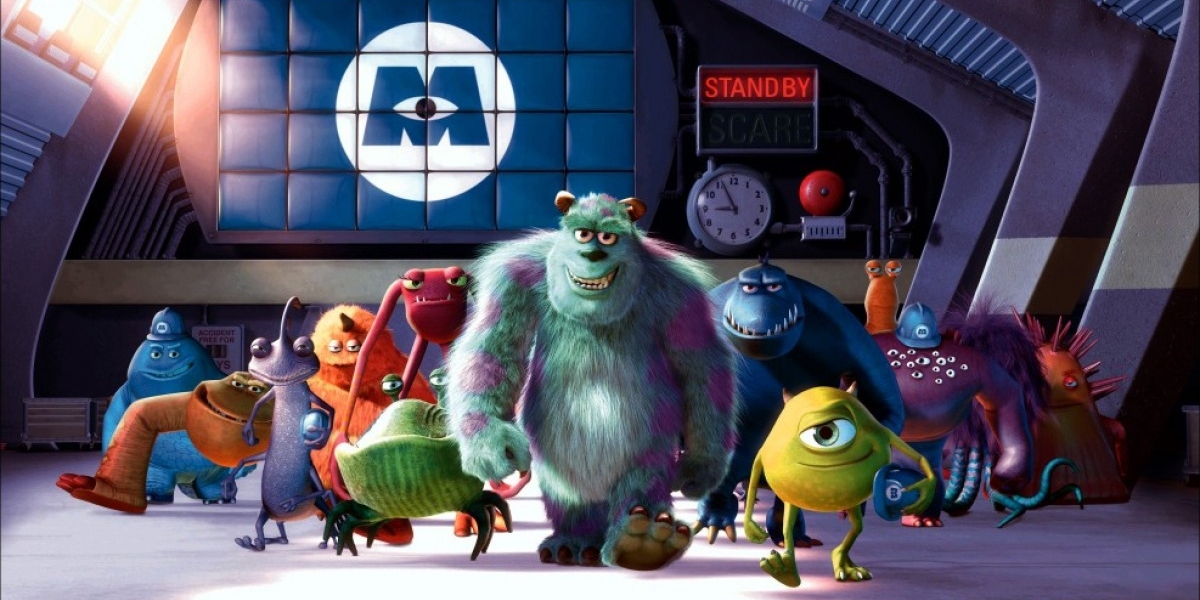
The film begins with the scene of a monster sneaking into a room. We then naturally put ourselves on the side of the child dozing in bed. We do not see the monster, only scary eyes and a horrific figure. Then he stands in front of the child who utters a cry. The monster then does the same, frightened by the cry of the little boy. This first scene immerses us perfectly in the film! The interest in this child (who is ultimately a robot) disappears and we become attached to this monster who has only the silhouette of scary but who is ultimately ridiculous.Then, we are presented with this organized society like ours: monsters work, monster children go to school… So we get totally used to these "monsters" that are ultimately only scary in our world. In this universe, what becomes frightening or even monstrous for its inhabitants is us, human beings.
A very interesting reversal of values then takes place. In this universe, the elements of the human world are supposed to be toxic and are feared, just as we fear what we do not know. But as history progresses, everyone realizes that these fears are unfounded. The film ends with this idea when they discover that laughter is a more powerful source of energy than fear. So they complete the myth of the scary monster and replace it with that of the sympathetic monster. It could thus be seen as an ode to tolerance, personified by these endearing monsters. After all, man has always feared what he could not understand. But by scratching a little surface of what he does not know, he can enrich himself and learn from these differences…
Author: Sami
The Incredibles – Brad Bird (2004): Superheroic and adulterous mise en abyme
Released in 2004 (almost 15 years ago, hello old man), The Incredibles remains to this day one of the coolest and most accomplished superhero movies ever released. In addition to being a mise en abyme of various superheroic universes, the animated film (awarded at the Oscars) did not spare children or adults, with themes such as family or … Adultery! Yes yes, adultery is indeed one of the main themes of this film, adding to the beautiful patchwork that is portrayed to us.
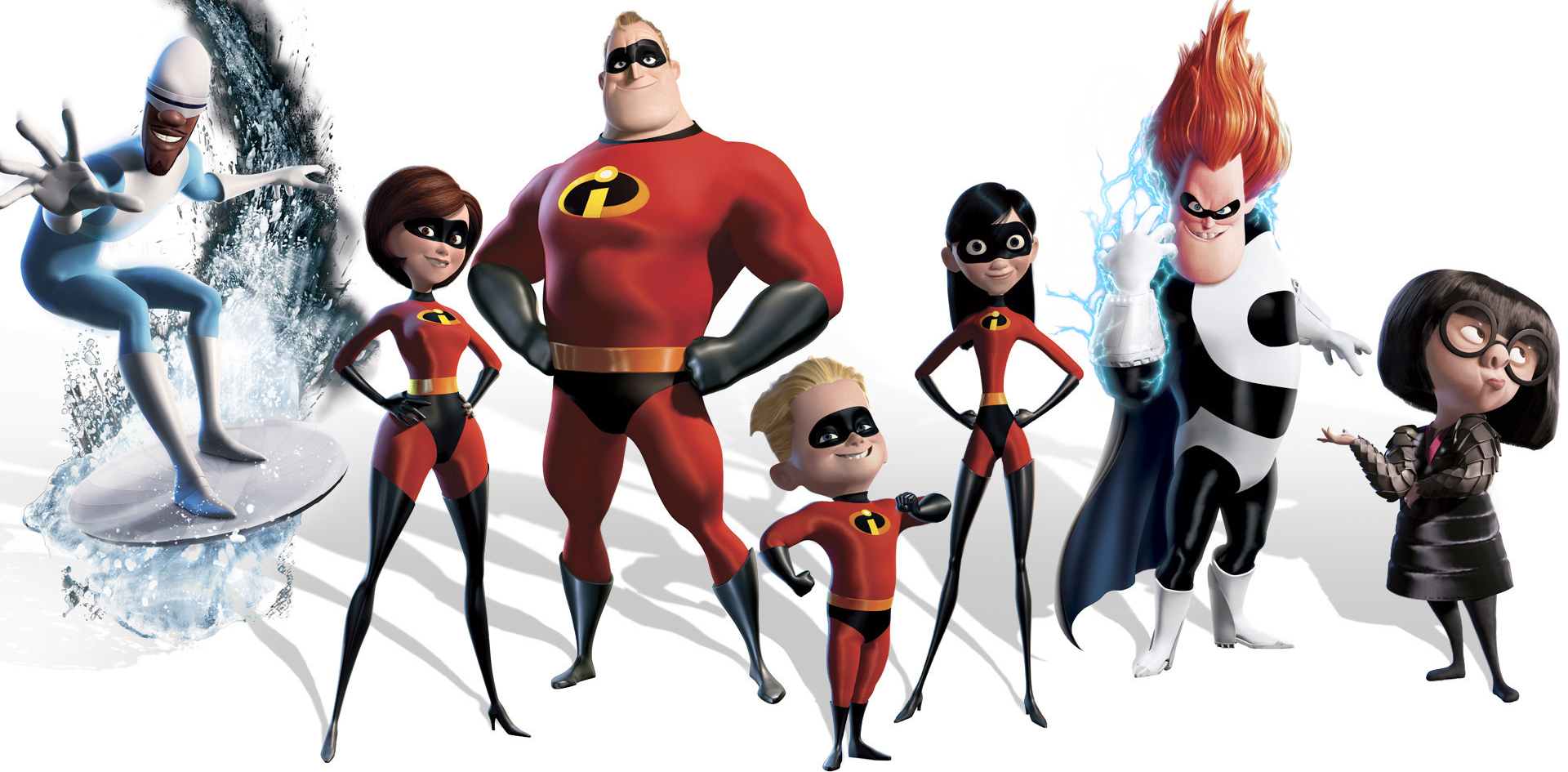
Let's start with adultery, because it occupies a prominent place among the subtexts of the work. In an effort to relive his past glory, Robert Parr hides his activities from his wife Helen. However, among his activities, Bob comes to associate with a woman as sensual as mysterious: Mirage! Although it is never explained in the film, a game of seduction takes place between the two characters. Of course, Mirage plays with his charms to better manipulate Mr. Indestructible. But this way that the two characters flirt is quite blatant, although Bob never considered for a moment that Mirage could be an adventure. In addition to this game of seduction that we witness, we follow Helen and her worries about the absences of her husband. Lies, cover-up, regular absences… Every effort is being made to ensure that Madame Indestructibles' concerns appear justified. It is even appalling to see how realistic this woman's situation is. There is no doubt that many couples who have experienced adultery have identified with this most embarrassing situation. The icing on the cake: the spectator witnesses with this narrative arc a dramatic irony. Clearly: he already knows what the characters have not yet discovered and he watches them get bogged down in their misunderstandings of all kinds. A little marvel of writing not really childish!
But let's not forget that The Incredibles is above all a superhero movie! So let's leave aside family considerations to take an interest in the mise en abyme made. Although the film is a very clear representation of the Fantastic 4, The Incredibles is a mine of references to many superheroes, as well as many superheroic currents. If we find subtle references to the time of publication of the first comics in which there was a certain carelessness, we are also propelled into a more realistic universe where superheroes are confronted with the responsibilities of their actions and their powers ("A great power implies great responsibilities … " ; that sentence tells us something!). In addition, the legitimacy of superheroes to act is undermined, echoing Alan Moore's cult Watchmen. It should also be noted regarding this legitimacy to act that Pixar was ahead of Civil War, legendary comics published in 2006-2007 in the United States. In short, a beautiful retrospective making us revise the history of various superheroic currents.
Author: Robin Uzan
Ratatouille – Brad Bird and Jan Pinkava (2007): Junk Food and Tolerance
Behind his animal fable, Brad Bird takes the opportunity to settle accounts with a certain America. The choice of France as the setting for Ratatouille is absolutely not trivial, since our country still appears today as a land of resistance to rampant globalization.
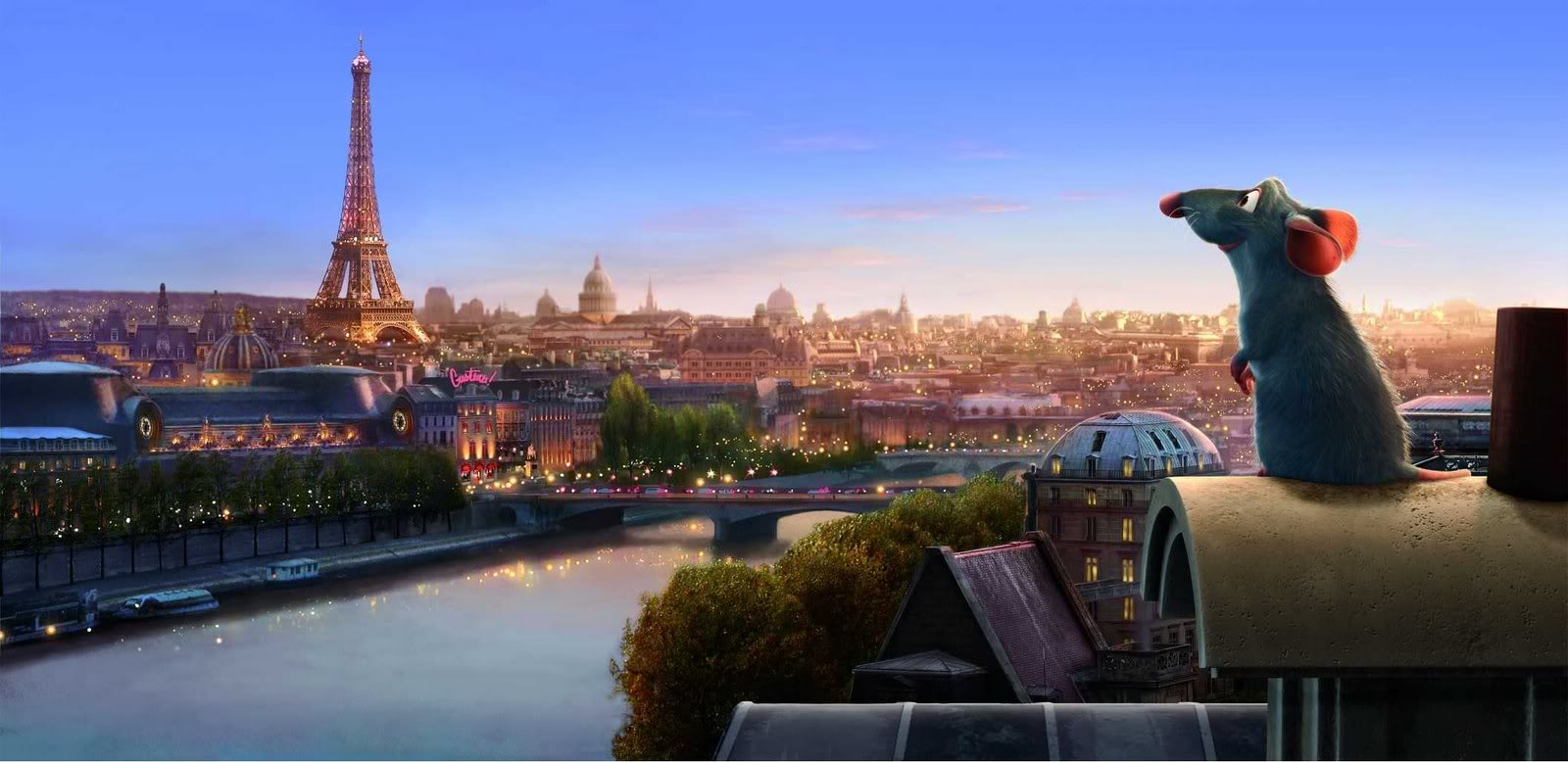
Thus, the hero's brother is an obese rat and a blatant example of this denunciation of our consumption mode. He prefers to eat a large amount of food without worrying about its quality, while the protagonist Rémy is leaner than his compatriots because he is more sensitive to the culinary arts. Bird opposes the ravages of industrial, colorless and odorless food, to promote a healthier and more natural diet. Brave position when you know that the film is produced by the Disney company, which represents precisely the cultural standardization denounced in this work. Moreover, the fine and gourmet pleasure of the film is based on a paradox: if the French culinary tradition radiates so much, it can also become an obstacle and even a dead end for those who refuse to live in their time and adapt to globalization. Similarly, in his community, Rémy does not follow the tradition of sewer rats. He refuses dirt as a principle of life and dreams of becoming a cook in the human world. The film proposes a whole questioning on the acceptance of the other, the acceptance of oneself and the acceptance of one's choices, appearing then as a true ode to tolerance, in addition to being a denunciation of globalization.
Author: Rabat
Wall-E – Andrew Stanton (2008): ecology and consumer society
Much more than just an animated film, Wall-E is undoubtedly one of the most advanced Pixar on its message. Apart from the obvious themes of ecology and the moral duty of humans to preserve the planet, Andrew Stanton goes further.
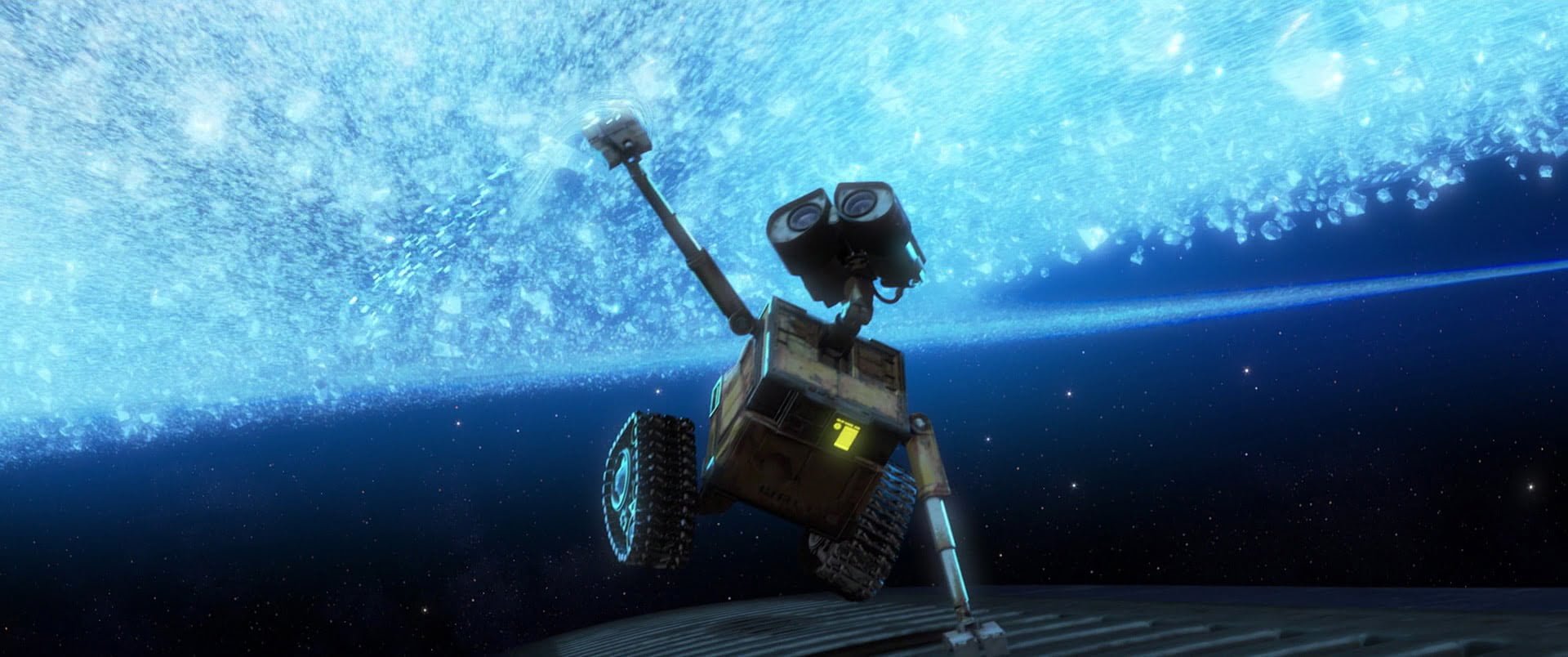
The world is ruled by a strict and blind authority, which follows the guidelines with blinders on. Admittedly, it is the robots that govern the Axiom, but the daily life of the passengers is parameterized from A to Z, with a well-oiled process that conditions the human to acquire an "independence", by dependence on the system. And woe betide anyone who would like to think "outside the box" and propose an alternative to this sick society. The consumer society is pushed to its climax with individuals literally overloaded with advertisements and consuming H24. This restrictive view of the world is turned upside down when Josh and Mary realize that there is a swimming pool on board the boat! We live with our noses glued to a screen or the floor and we often miss the essential things … if only we took the time to stop and look up. The utopia promised by Buy N Large has been following its cruise for more than 255,642 days.
Contemporary society and especially the Western vision are questioned in all its aspects in Wall-E, whether it is education (and the curious alphabet that we teach toddlers), fashion, the circulation of false information and conditioning… The adult eye will be able to appreciate the various and unexpected questions that this story proposes. Finally, the subtlety of the scenario shows that even robots are fed up with their daily lives and that as soon as the cat is not there, the mice dance and take the time to observe the wonders of the world…
Author: Domnulekhuz
Up – Pete Docter and Bob Peterson (2009): Mourning, couple and eternal youth
Up there is probably (along with Vice-Versa) the most acclaimed Pixar regarding its maturity. Becoming emblematic thanks to its legendary introduction, the animated film evolves in a context and symbolism that belong only to it. Between the various mournings of Carl Fredricksen, the theme of the couple and the race for youth, many things are to be said about Up There. To tell the truth, this work is so complex that it deserves a thesis on its own!

Grief is an increasingly recurring theme at Pixar and offers Up the maturity we know it. One thinks of course of the mourning of Carl Fredricksen vis-à-vis his wife. He who lived only through Ellie, is now only a shadow of his former self after his death. The initiatory journey to Paradise Falls will offer the old man the catharsis he needed, forcing him to let go and abandon his home when the situation becomes critical. All this grief is personified by the house in which Fredricksen had built his entire life. Another mourning will be for Carl, namely the mourning of the child he never had. This will be symbolized by Russell, friend and grandson of adoption bringing naivety and cheerfulness back into the old man's heart. Finally, Carl Fredricksen will have to mourn a part of his youth, symbolized by his idol Charles Muntz, having exchanged his costume of national hero for that of awful villain.
In addition to the various bereavements, the theme of the couple is also very present in the work of Pete Docter and Bob Peterson. The couple Ellie and Carl of course, but the couple in the broadest sense. More clearly: the pair. The couple Ellie and Carl, although they are only visible on screen during the first few minutes, hang like a shadow throughout the film because Carl only acts for them. We can also think of the Carl/Russell pairing, Carl representing a surrogate father for Russell and Russell a surrogate grandson for Carl. In addition to this surrogate family aspect, the two characters gain something priceless: a friend. Russell also forms a very amusing duo with Kevin, the inimitable dabou. Their relationship of tenderness and humor forged the most hilarious moments of Up There. Finally, Carl Fredricksen forms a spiritual duo with Charles Muntz, idol of his childhood. However, he will soon realize when he meets him that this admiration was based on bases that no longer exist, so detestable has Muntz become. Thus, this rejection of the adventurer is also a way for Carl Fredricksen to detach himself from a part of his childhood memories, namely the idealization of a man who has become cruel.
However, the rejection of part of his childhood does not imply for Carl Fredricksen the total rejection of his youth. In fact, it would be quite the opposite. Fredricksen only runs through the ghost of his lost youth, represented by Ellie, the love of his life. However, the abandonment of his house at the end of the film symbolizes an attachment to the future (represented by Russell) rather than to the past. Thus, Fredricksen acquires a second youth marked by adventures with Russell, while not forgetting to embody the wisdom due to his old age. It is therefore a whole patchwork of emotions and symbols that offers us Up There, which did not deserve its Oscar for best animated film in 2010!
Author: Robin Uzan
Toy Story 3 – Lee Unkrich (2010): childhood grief and transmission
Released in 2010 after the acclaimed Ratatouille, Wall-E and Up There, Toy Story 3 is the film of all exceptions, posing as one of the best sequels in the history of animation. A true jewel of emotion, Lee Unkrich's film manages to find the perfect balance between wonder, sensitivity and renewal. After the themes of overconsumption, power struggle or abandonment, it is this time on the mourning of childhood that the film is shot.

Despite its forward-looking focus and reflection on childhood memory, Toy Story 3 does not forget to entertain, to make people laugh but also to move, sometimes to tears. We think in particular of one of the most violent and tetanizing sequences that the studio has been able to offer us to date (if you have seen the film, you know which one it is!). It is also the theme of grief that is transmitted here by its director, in particular by abandoning one's childhood to finally move on to adulthood. The strength of the film is to succeed in touching the hearts of both children, fascinated by a childish universe that builds them, and adults who see in Andy's character their guilt, that of having denied a colorful and dreamy past to indulge in a more mature and less warm world. The peak of sensitivity of the film is in its final scene, which sees its subject on transmission sublimated by a complicit understanding between the old and the new generation. This is why Toy Story 3 borders on Pixar's masterpiece: for having managed to transmit to generations a solar and hopeful message, without sparing its viewer, child and adult.
In addition, we find in this third opus the eternal theme of the Toy Story saga: that of abandonment. After being personified by Woody and Jessy (Toy Story 1 & 2), it is Lotso's turn to represent this fear inherent in the toys of the film (like many human beings). Disillusioned, violent and dictatorial, Lotso is the final stage of evolution of the toy unfortunate to have been abandoned, to the point of having become a real tyrant. It is easy to compare Lotso to the gold digger in Toy Story 2, or even to what could have become of Woody if he had felt abandoned in this way. Recall that Woody became for a time deceitful and violent following his feeling of abandonment and replacement by Buzz in the first opus. The opportunity to make the adult and the child think about one thing: everyone can become a monster, as long as a violent emotion is instilled in you by a traumatic event …
Author: Louis Verdoux
Rebel / Brave – Mark Andrews and Brenda Chapman (2012): Feminism
Released in 2012, Brave by Mark Andrews and Brenda Chapman is a bold and special film in many ways. Mérida is a rebellious and resolutely modern princess, who cultivates a complicated relationship with her mother, Queen Elinor.
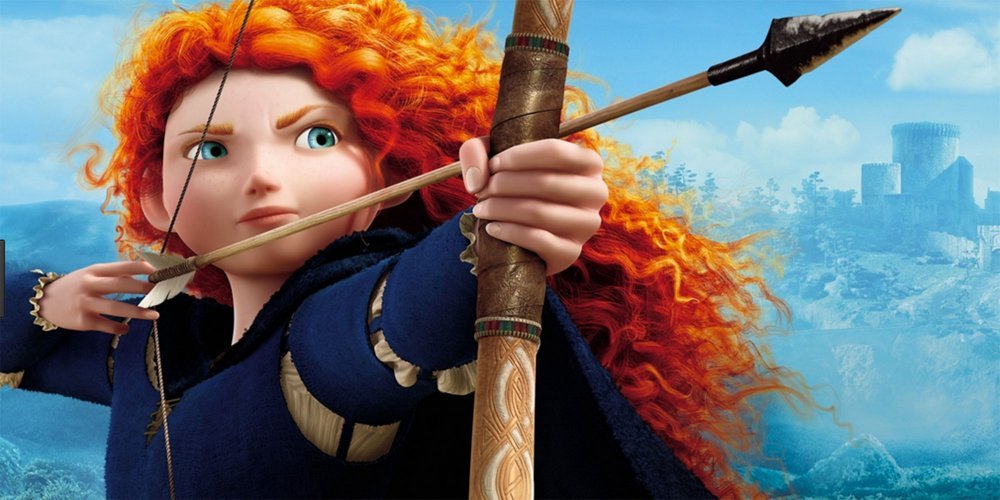
Merida is not a fairytale princess. She does not have the wait-and-see role of her more traditional sisters, in the foreground of which Snow White and Aurora fromSleeping Beauty. Note in passing that the Sleeping Beauty is called in the original version Rosépine. Mérida wants only one thing: to be able to choose her destiny on her own as well as her future companion, without bending to ancient traditions (including forced marriage). She wants to be a princess and then queen by herself, without having to rely on the authority or protection of a man. She does not conceive that she should be denied the passion in which she excels, archery, simply because it would be a man's activity. Indeed, for what reasons would it be less legitimate than its suitors to practice this activity when it far surpasses them? She intends to fight for her freedom and her free will.
Mérida and her mother are the only two women in the film (apart from the witch) and each represents an aspect of femininity. Queen Elinor is the incarnation of the woman following archaic models. Calm, composed, always in control of her body, encased in skimpy clothes, who swears by the traditional education aimed at placing the woman in the shadow of her husband by doing needlework.Conversely, Mérida wants to move freely, ride a horse and travel the countryside without complying with protocols. She defends her convictions, even if it means opposing society. She is a beautiful representation of modern and self-confident femininity. Both represent two seemingly opposite aspects of femininity and a clash of generations. But in reality, they are conceptions of life that are just waiting to dialogue to draw from each the qualities of the other. Mérida learns responsibility and wisdom, while her mother allows herself to relax and no longer control everything, especially her daughter's life.
Author: Sandra B
Vice-Versa – Pete Docter (2015): Human Psyche
Vice-Versa (Inside – Out): emotion above all! In 2015, Pixar regained the legitimate reputation attributed to it after a rather surprising passage in empty, crossed by half-hearted productions and which seemed to announce the erosion of the powerful dream machine that it embodied for fifteen years. This was without counting on the almost miraculous stroke of brilliance that was Vice-Versa. This work reconciled both the public and the critics, who find themselves united in a reception tinged with both tenderness and almost absolute enthusiasm.
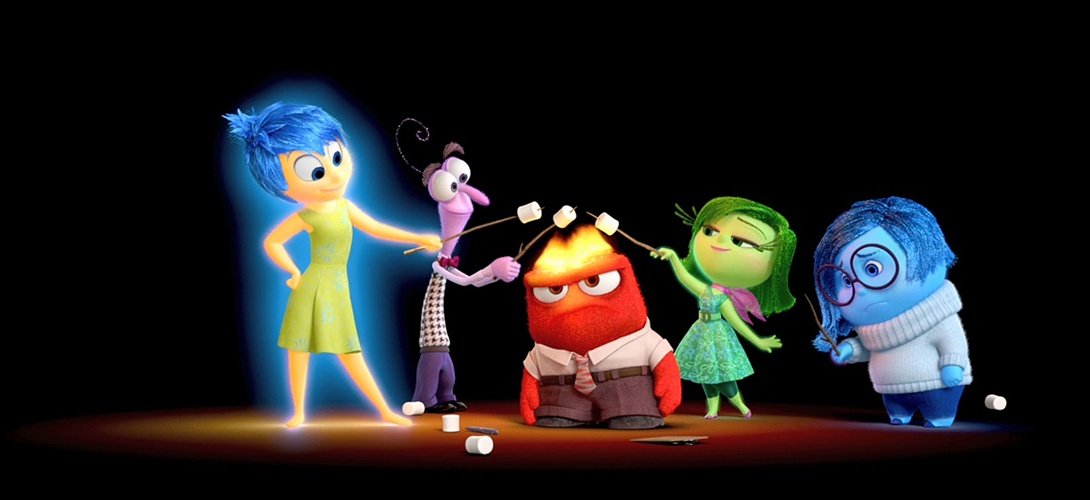
A reception finally coherent with regard to the mastermind of this work: Peter Docter (to whom we already owed Monsters & Co . and Up There) and who is presented (quite rightly) as a filmmaker of feeling. And what more striking link between these three works, therefore, than that of the thread of emotion that runs through them powerfully; is thus at the heart of the issues of storytelling? Thus, the concept of Vice-Versa is literally based on the conceptualization of the mechanism of our emotions and their meanings, this reflection being placed on two levels:
- The plan of fiction through the different characters of the story and in particular the psychic journey of the young Riley, who learns to manage an emotional mechanism more and more complex over the years (mechanism that for a time will completely exceed her).
- A more pragmatic plan that arises at the scale of the spectator and the reception by him (how and what emotions to make the other feel? How do I feel as a viewer and why?).
The film thus recalls the studio's incredible ability to succeed in playing simultaneously on several reading grids without ever abandoning a single one of its audiences. It is with rare acuity that he manages to find such a wide field of eloquence with adults who find a sounding board still very present in them. You have to accept your emotions as they are and recognize the legitimacy of each. Sadness is as essential as joy or anger because each one participates in a harmonious balance that allows us to build ourselves. The film also evokes the relationship with others which involves feeling: one must accept to share one's emotions with others to be understood. Through this reflexive journey, Pixar has thus succeeded in the incredible challenge of immersing us in an explosive adventure full of adventures starting from a purely conceptual reflection. By taking its audience with a certain intellectual height, the studio proves once again that entertainment can perfectly coexist with demanding thinking.
Author: InesH
Arlo's journey – Peter Sohn (2015): the animal that lies dormant in man
Imagine for a moment that the asteroid that prefigured the extinction of the dinosaurs had missed its target. Would history have taken its course? This is how Arlo's Journey begins. Arlo is a young Apatosaurus as small as he is fearful, who a tragic event will take away from home. His return home will be fraught with pitfalls and encounters. So far, no surprises…And yet, the film will gradually offer us a very interesting reversal of the roles man and animal.
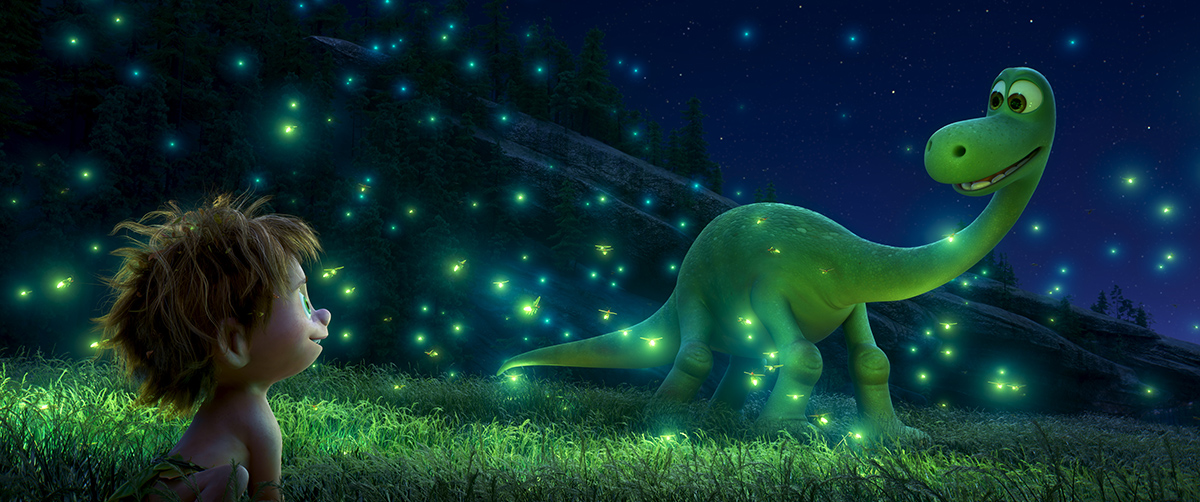
The encounters are multiple but the most moving and surprising is obviously the meeting between Arlo and Spot, a little boy who becomes his travel companion. These tame each other quickly and make each other grow. The most surprising is in the character of Spot. Indeed, when we discover this little being, we expect to see a little boy. But here, the human is totally dehumanized! Spot is a real little wildling who lives among dinosaurs and does not speak. It is expressed only by grunts, barking and screaming. Spot hunts and wiggles his butt like a dog would wag his tail. He even lets his tongue hang out when he is happy with the image of our faithful canine companion. On the other hand, Arlo talks and cultivates the land with his family, conveying a purely ecological message. Arlo is an intelligent and sensitive being. In reality, it feels more like Arlo is a human in a dinosaur body and Spot a dog in a man's body.It is not common to see this reversal of roles at Disney/Pixar. In most of the classics of the big-eared studio in collaboration with Pixar, men are men and animals are personified. But these usually do not reverse their characters.
The film takes place in the Stone Age, Man is linked to a very primitive image. It is therefore through this context that these two major studios were able to convey a strong message of a certain maturity. Indeed, the animal is not the one we think… This makes us think clearly about the animality of Man and his primitive instincts. It is through this totally entertaining animated film that we begin to reflect on the sometimes very bestial actions of Man. We think of the Man who makes war, who kills animals to make hunting trophies… in other words, the destructive Man even though he is endowed with reason (unlike animals). This forces us to have a deep reflection on ourselves. In this cartoon, it is not the Man who is honored but the animal. And far from shocking us, this reversal of roles makes the story so much more touching. The transfer of emotions and sensations is done in the simplest way possible, that is to say through sounds, tears or laughter and fearful eyes. It is not a simplistic work but it will be much more accessible for young audiences than is the excellent Vice-Versa, quite complex for our dear little blond heads.Thus, Arlo's Journey is a perfect animated film for the child target but not only…
Author: Nadiou Nadiou
Dory's World – Andrew Stanton (2016): Disability
Some 13 years after its great success Finding Nemo, Pixar creates a sequel focusing on Dory, the blue surgeonfish who suffers from a disease called "the disorder of immediate memory" (as Dory herself says). When we meet Dory in 2003, we see that she was mainly used as a comic element of the adventure of Marin and Nemo. In the 2016 film, memories of Dory's childhood resurface and she decides to find her previously forgotten parents. This is how our favorite surgeonfish has a dramatic power far greater than we already knew him.
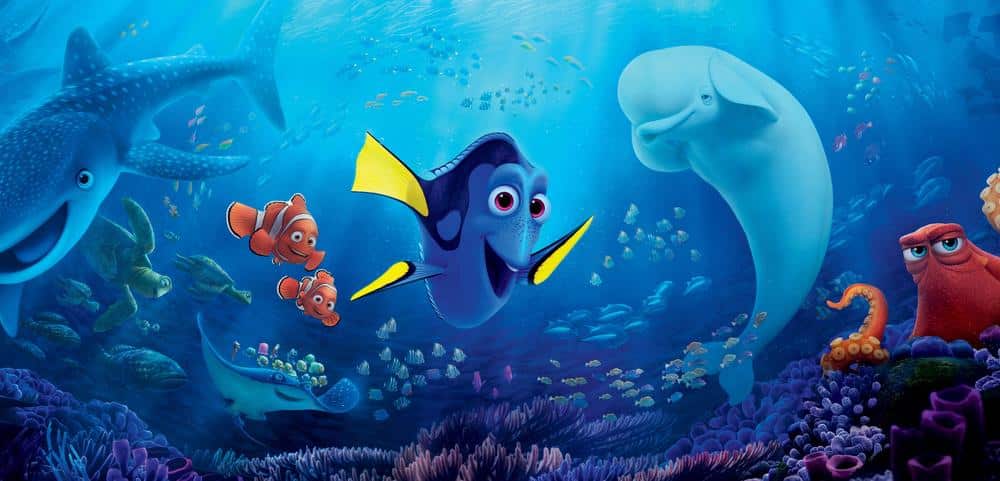
The film is extremely relevant in its treatment of disability. One of its strengths is the presence of several animals with physical and mental diseases: Nemo and his atrophied fin, the myopic whale shark Destinée, the beluga Bailey suffering from a problem with its echolocation, Hank, an octopus who has only seven tentacles (and who is probably anxious)… But the strength of Pixar is that these disabilities are not presented as "problems". This is very important when you bear in mind that these films are aimed at a young audience that needs role models. Often, characters with disabilities are isolated beings living in a "normal" environment and struggling to adapt to this world; Or they are represented in such a way that the main protagonist feels better because he/she helped him/her. Here, Dory IS the main protagonist and she is the one who helps others. Dory's World shows that individuals who are not in the "norm" are not necessarily worse and should not be treated as divergent: their brains function differently from others, but this is their strength because they can explore reality and solve problems in original ways. Memory loss is not the problem. The real problem is the lack of patience and kindness on the part of others. Dory succeeds in her mission not in spite of but because of her disability.
Other truths of life with a disability are studied here, including ableism (discrimination based on physical ability) with the figures Gerald and Becky or the love, devotion and patience of Dory's parents (Jenny and Charlie). Finally, the villain in Finding Dory is not a character, but it is the problems that everyone encounters: the lack of self-confidence and the position of others in the face of these problems. The film shows that it is by working together and not stopping at our differences that we can achieve our goals.
Author: PatrycjaT
Cars 3 – Brian Fee (2017): obsolescence and transmission
Cars 3 is neither more nor less than the Rocky Balboa of the Pixar saga! After a very pleasant first episode and a second much less successful (despite the audacity of making it a spy film), the Cars saga came back stronger than ever with Cars 3. It must be said that screenwriter Daniel Gerson and director Brian Fee did not go dead hand about the descent into hell of the hero Flash McQueen. Initially undermined by his obsolescence, McQueen will suffer the worst thing a top athlete can suffer: an injury that significantly reduces his physical condition. Then begins a struggle to regain not its former glory, but the authorization to compete again on a professional circuit.

The comparison between Cars 3 and Rocky Balboa is not trivial, because many questions are similar: Does an injury necessarily mark the end of a sporting career? When does passion die out and how can it resurface? How to stay up to date with new, more advanced training methods? Is it legitimate to ostracize old legends in order to let new talent flourish? All this marks not only the resemblance between these two films, but also its resemblance to the entire Rocky saga, the latter being full of deep themes. These questions also resonate with our modern society and our relationship to sport. High-level sport has developed a lot between the 20th and 21st centuries and Cars 3 cheerfully refers to it, especially via the economic considerations mentioned (advertising, sponsorship …) or state-of-the-art training rooms. Enough to make us think about sportsmanship and how money has perverted many disciplines.
But if Cars 3 is a mirror of Rocky and our society, it also appeals in a very accentuated way to the first episode of this saga. The themes of transition and questioning are taken up and increased tenfold in order to offer our hero an initiatory journey of great emotional power. This time, McQueen will not have to learn from a former racing legend (Hudson Hornet). He will have to practice with a young coach accustomed to training new generation vehicles and whose modern methods completely exceed him. However, McQueen's "Old School" training method will also be of great use to her coach Cruz Ramirez, who will discover exercise modes at odds with the ultra-refined rooms in which she plays. Thus, we find in subtext the theme of mutual transmission between generations. Admittedly, previous generations have a lot of experience to show. However, these generations above must not close themselves to the experience of the younger generations, otherwise they will find themselves totally overwhelmed by them sooner or later. The generational exchange is therefore admirably portrayed by the journey of Flash McQueen, who wears in the same film the costume of the student and that of the mentor. A magnificent evolution of McQueen's career, supported by an impeccable staging (damn the scene of the accident is strong!) as well as dialogues with little onions. Note the very advanced tribute to Paul Newman, who played the mentor Doc Hudson in the first Cars. Despite his death, Doc Hudson hovers like a benevolent shadow over our heroes. The same could be said of Paul Newman, whose last role was in 2006, before this sacred monster of cinema died at the age of 83.
Author: Robin Uzan
Coco – Lee Unkrich (2017): death, mourning and memory
Set during the iconic Dia de los Muertos, Coco deals admirably with death, mourning, but also memory and how to maintain it. The great strength of Coco is to popularize these subjects for the youngest, while making them admirably moving for adults.A real dive into the confines of the genealogy of Miguel and his family, Coco is of a rather disconcerting emotional power.
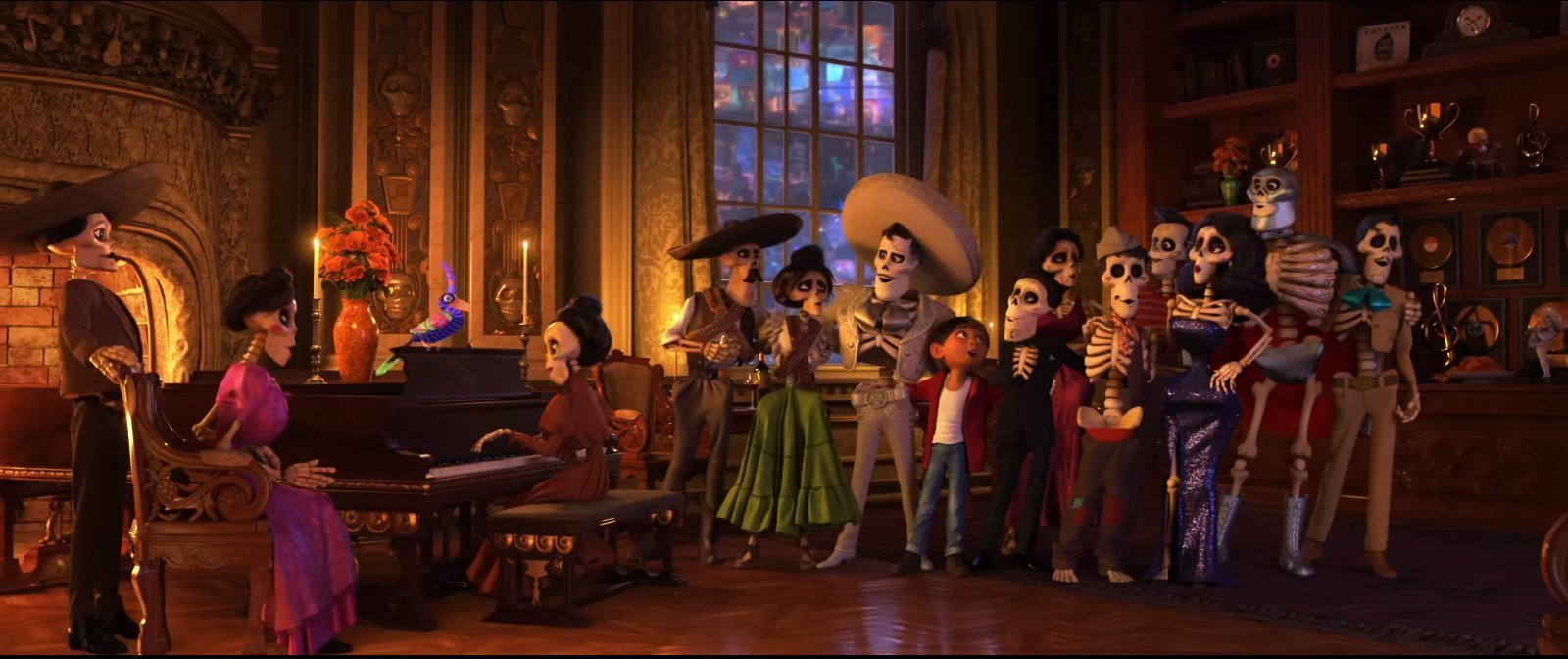
If talking about ecology (Wall-E), feminism (Rebel) or childhood depression (Vice-Versa) is important and difficult, death remains one of the hardest themes to address (if not the hardest), especially in a youth media. After all, this topic concerns everyone without exception and worries the majority of human beings. Yet, what finesse emerges from Coco, despite such a delicate subject to deal with. The acceptance of death as a component of life, while reminding us to honour the memory of the deceased, is beautifully portrayed and particularly subtle. The same themes could have been approached in a much cruder way in order to spare our dear little blond heads. But the number of levels of readings present in this work makes it a total success. Let us take as an example the principle of "the last death", evoked within the country of the deceased. For children, this will be interpreted as a danger to our heroes. but for the adult in us who fears death, it will echo one of the greatest fears of the Human: forgetting. Because indeed, the principle of this "last death" is that we no longer have anyone to honor our memory, thus making us fall into total nothingness… What a talent on the part of the giant Pixar to manage to create such good stories, while touching the spectators at the very root of their emotions, appealing to their most intimate and repressed fears.
One might think that these themes prevent the magic (specific to Pixar feature films) from intervening: but this is not the case. Despite a gloomy background subject, Coco keeps this freshness that we could find in Up There, Toy Story, The Incredibles and many others! This is probably due to the theme most highlighted in the film: music! Yes: if death and mourning are the subjects that we find in subtexts (or secondary themes), music remains the main issue of this story. Thus, Miguel's love for this art makes it possible to play all the scenes, although almost all of the film takes place in the land of the dead. And since we're talking about the land of the dead, it also presents a glaring dichotomy between the subject of the film and its treatment. In the collective imagination, death is sad, sullen, gloomy… However, by discovering this part of Mexican culture, we also discover a colorful world, in which death is not the end, but simply a next stage of life…
Author: Robin Uzan
And that's it for our return to the giant Pixar! There is still so much to say that we could dedicate comprehensive studies to it. How about you? What's your favorite Pixar? Leave us your opinion and your analysis on the missing feature films! We will be able to add you (and credit you) in the article! Gentlemen / ladies: to your keyboards!




